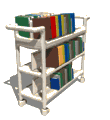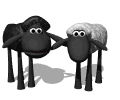|



|
Literacy problems to solve for Key Stage 1, 2 and 3
Word Chain words
Pick two/three words put
them into a sentence.
brother, back, another, ball,
about, bed, dig, door, laugh, went, there, school, this, little, down,
house, sister, three, water, old, want, push, people, ran, girl, good,
first, jump, might, once, boy, going, play, away.
Pick two/three more and repeat.
Syllables
Think of another
word with the same starting letter and same number of syllables :
calendar
dependant
belonging
tolerate
petrify
Connectives game
Using a variety of connectives
can help to make your language clearer and more interesting . When you
have played this game, try to remember some of the connectives and practise
using them in your own writing and speech.
Instructions for
play
Work with a partner of small group to write or tell a story
together in the following way:
- Cut up the connectives
cards on worksheet 2.4a and place them face down in a pile.
- Take it in turns to pick
up a card from the pile. When you have taken your card you must add
one sentence to the story. Your sentence must include the connective
on your card.
- The game ends when you
have finished your story. Try to use all the cards if you can.
You can make up your own
story if you wish, or you may find it easier to use a familiar folk
tale like cinderella.
Please cut out the boxes
below
| The next
sentence of your story must include the connective:
that
as
in
I think that she will come. |
The next
sentence of your story must include the connective:
which
as
in
She chased the dog which had bitten her. |
The next
sentence of your story must include the connective:
who
as
in
It was his sister who helped him with his homework. |
| The next
sentence of your story must include the connective:
when
as
in
I changed my clothes when I got home. |
The next
sentence of your story must include the connective:
where
as
in
This is the place where I keep the equipment. |
The next
sentence of your story must include the connective:
if
as
in
If you don't stop tapping I shall go mad. |
| The next
sentence of your story must include the connective:
although
as
in
She enjoyed the picture, although she had seen
it before. |
The next
sentence of your story must include the connective:
because
as
in
We had to stay in because it was raining. |
The next
sentence of your story must include the connective:
since
as
in
I have not seen her since she had her hair cut. |
| The
next sentence of your story must include the connective:
while
as
in
She ran away while you were waiting outside. |
The next
sentence of your story must include the connective:
unless
as
in
You can't go in unless you have a ticket. |
The next
sentence of your story must include the connective:
until
as
in
He waited until the bell went. |
|
The
next sentence of your story must include the connective:
so
as
in
You have finished your work, so you can go. |
The next
sentence of your story must include the connective:
so
that
as
in
She climbed on the bench so that she could see
better. |
The next
sentence of your story must include the connective:
as
if
as
in
She laughed as if she thought it was funny. |
Extension
- Was your
story any good? Which do you think were the best sentences?
- Which of the connectives
fitted your story most naturally? Were any of them difficult to use?
- Sort the connectives cards
into sets, for example when and until might be in a set of connectives
that deal with time. make a list of all the sets and compare your
list with lists from other groups.
Wordswork was from
North East Lincolnshire's Literacy Team |



|






